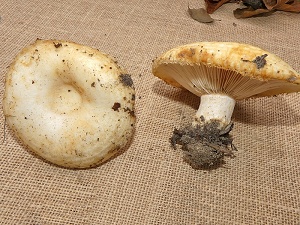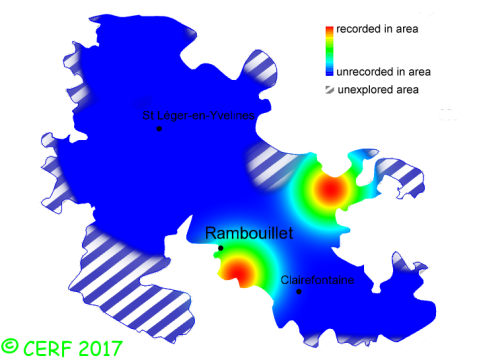| Lactarius citriolens Pouzar |
|
|
|
|
|
|
The cap is pallid yellow to dull yellow, convex then depressed; its margin is inrolled and hairy. The cap surface is slightly banded, hairy, especially at the margin, rather viscid. The stem is concolorous with cap, whitish to ochre-yellow, slightly tapering towards base, smooth and without blotches, hard then hollow, without ring. The flesh is pale yellow, turning yellow or reddish when cut; its taste is hot, acrid and bitter; the odour is fruity, complex, of lemongrass, pelargonium or chicory; its texture is grainy (breaking like a chalk stick), exuding when cut a white milk, turning sulphur yellow in a few seconds. The gills are pale pink to ochre-buff, yellowing, turning reddish when bruised, adnate to slightly decurrent, close . The spore print is pallid ochre (D-F). This species is mycorrhizal. It grows on the ground, in deciduous or mixed woods, on a rather calcareous soil, with birch. The fruiting period takes place from September to November.
Chemical tests : mild reacting orange yellow to potash. Distinctive features : pale yellow cap, with inrolled and hairy margin but only slightly banded; fruity odour, of lemongrass; exuding a white milk, turning quickly sulphur-yellow when exposed to air; with birch Lactarius citriolens is quite rare and localised in the forest of Rambouillet, and is quite rare, more generally speaking . | ||
|
page updated on 14/01/18

